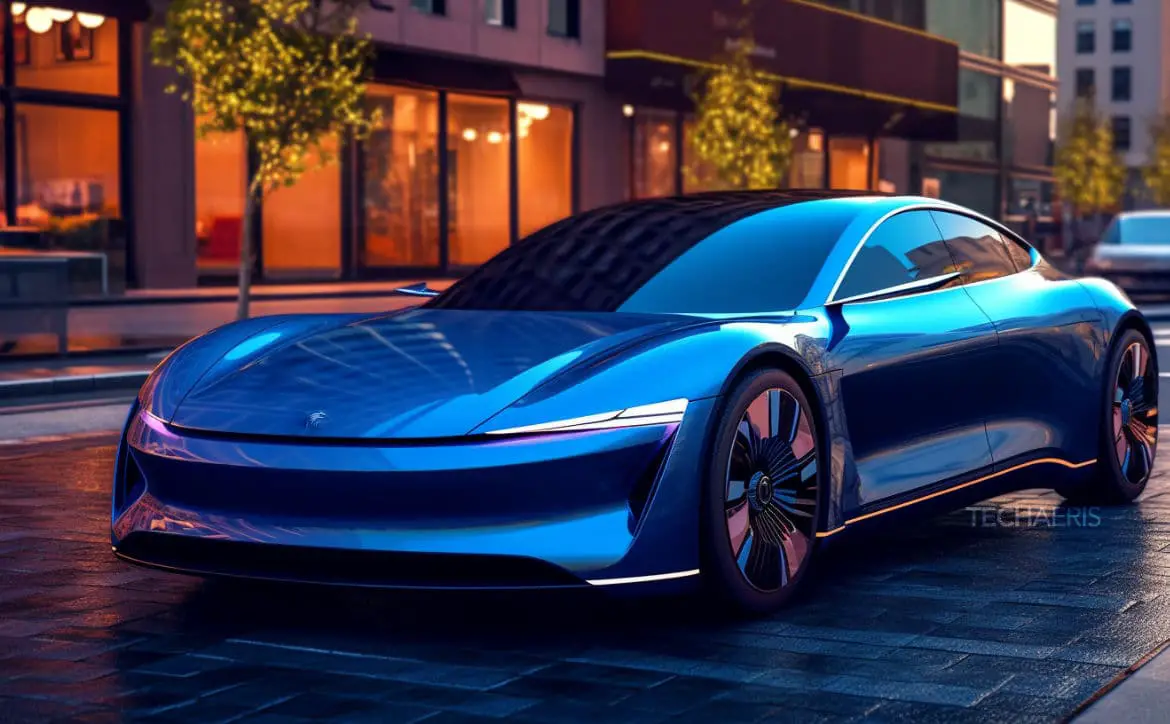Transportation is crucial for modern society. People rely on planes, trains, and automobiles to commute to work, transport goods, and travel to faraway lands. Most means of transit use fossil fuels for power, but the tide is turning.
Estimated reading time: 5 minutes
Transportation and logistics professionals are searching for ways to green the sector. What progress have they made? What can you expect in the future? Here are five examples of futuristic tech that is making transportation greener.
Transportation Future
1. Magnetic Levitation Trains
Trains are a popular form of transportation in Europe and Asia. In China, 2.61 billion people traveled by train in 2021. Using the train or metro line to travel is more environmentally friendly than driving. Many countries have switched to electric-powered trains to enhance sustainability — and they’re using magnetic levitation (maglev) to make them even better.
There are maglev trains in China, Japan, and South Korea. They’re unique because they use magnetic forces to levitate and propel themselves at high speeds. They reduce friction and consume less energy than other trains. The fastest maglev trains have recorded speeds of 375 mph. They make transportation much easier for those who desire rapid travel with lower carbon footprints.
2. Hyperloop Trains
Hyperloop trains are another sustainable innovation. There are no official systems yet — however, companies are researching the concept. Hyperloop trains use vacuum tubes to transport people or goods quickly across far distances. Each pod seals itself from the outside, reducing drag and minimizing energy consumption.
Hyperloop trains have been in the works since 2013. A decade ago, Elon Musk proposed the idea and published a white paper on his concept. Musk constructed a test track for the Hyperloop in 2016. However, reports indicate SpaceX has abandoned the Hyperloop prototype after unsuccessful tests.
There is optimism for Hyperloop hopefuls. In April, the South China Morning Post reported China plans to use maglev trains in a vacuum tunnel to connect Shanghai and Hangzhou. The reported rail will be 150 kilometers long and reduce travel times between the cities.
3. EV-integrated Telematics
The past few decades have demonstrated why telematics are helpful for the logistics industry. Professionals use telematics to track equipment issues and increase vehicle efficiency. The technology has helped truck drivers and fleet owners be more environmentally conscious by optimizing routes and lowering emissions. The next generation shows an even brighter future.
Electric vehicles have a rapidly expanding market. Experts predict their revenue will grow 17% annually by 2027, resulting in a market volume of over $850 billion. The rise means it’s time for EV-integrated telematics.
This technology tracks EVs and updates the driver on battery levels and energy consumption. The system can suggest how to make your EV more efficient. For example, it can notify drivers to avoid fully charging their batteries because it degrades the battery faster. EV-integrated telematics also updates drivers on station availability — helpful when using your EV on vacation or a business trip.

4. Vehicle-Grid Integration
The rise of EVs means less fossil fuel use — but these machines will strain power grids. Energy demand is already high and continues to grow with rising populations worldwide. Experts predict EVs will increase America’s electricity consumption between 8% and 13% by 2030. How can you reduce your share? One method is to use vehicle-grid integration (VGI).
VGI integration encompasses multiple ways for owners to conserve energy. First, you can use managed charging to charge your EV efficiently. The automated charger detects how much power you need and shuts off when complete.
You can also take advantage of VGI at home with bidirectional charging. In this process, EVs return electricity to the grid during hours of high demand or emergencies. Both forms of VGI will stabilize the grid amid the rise of EVs in the U.S. and worldwide.
Some newer EVs on the market have bidirectional charging features. These vehicles include the Nissan Leaf, Ford F-150 Lightning, Hyundai Ioniq 5, and the Mitsubishi Outlander PHEV.
5. Electric Air Taxis
Large cities are infamous for their traffic congestion. Research shows the average New Yorker spends 236 hours annually in rush hour. Public transportation like buses and trains alleviates the traffic but does not solve the problem. The only alternative is to go airborne with your travel. What if you only need to travel 10 blocks? The answer will soon be electric air taxis.
Electric vertical takeoff and landing (eVTOL) vehicles could be a terrific remedy for urban congestion. They look like hovercrafts you’d see in a sci-fi movie. These pods take off and land vertically, thus the name. Electric air taxis are nearly silent and emit no air pollution, creating a green transportation option in large cities.
Numerous companies are exploring eVOTL technology and will debut their services this decade. For example, German company Lilium operates its electric air taxi at 175 mph with a range of about 155 miles. It expects to launch commercial services in 2024.
Leveraging Transportation Technology for a Greener Future
The transportation industry has come a long way since the days of Henry Ford, the Wright Brothers, and Richard Trevithick. Technology has elevated cars, trains, and planes to make them faster and more environmentally friendly. Imagine getting on a train and traveling from Los Angeles to San Francisco in half an hour. This idea could become a reality in the future. The future of transportation technology concentrates on electricity and renewable energy. The industry is moving away from fossil fuels as climate change’s effects loom daily. These five examples of futuristic technology demonstrate the future is bright — and some of it is already here.
What do you think of these future transportation ideas? Please share your thoughts on any of the social media pages listed below. You can also comment on our MeWe page by joining the MeWe social network. And subscribe to our RUMBLE channel for more trailers and tech videos!

